Why Spain is a great place for kids
Choosing the city that's right for you
Choosing the visa that's right for you
More than just great weather
Why Spain provides a better quality of life

How we Plan

What we pack
Choosing Travel Insurance
Book Your Hotel
with Booking.com
Book Your Car
with RentalCars.com
Book Your Flight
with Skyscanner.com
Book Your Tour
with GetYourGuide.com
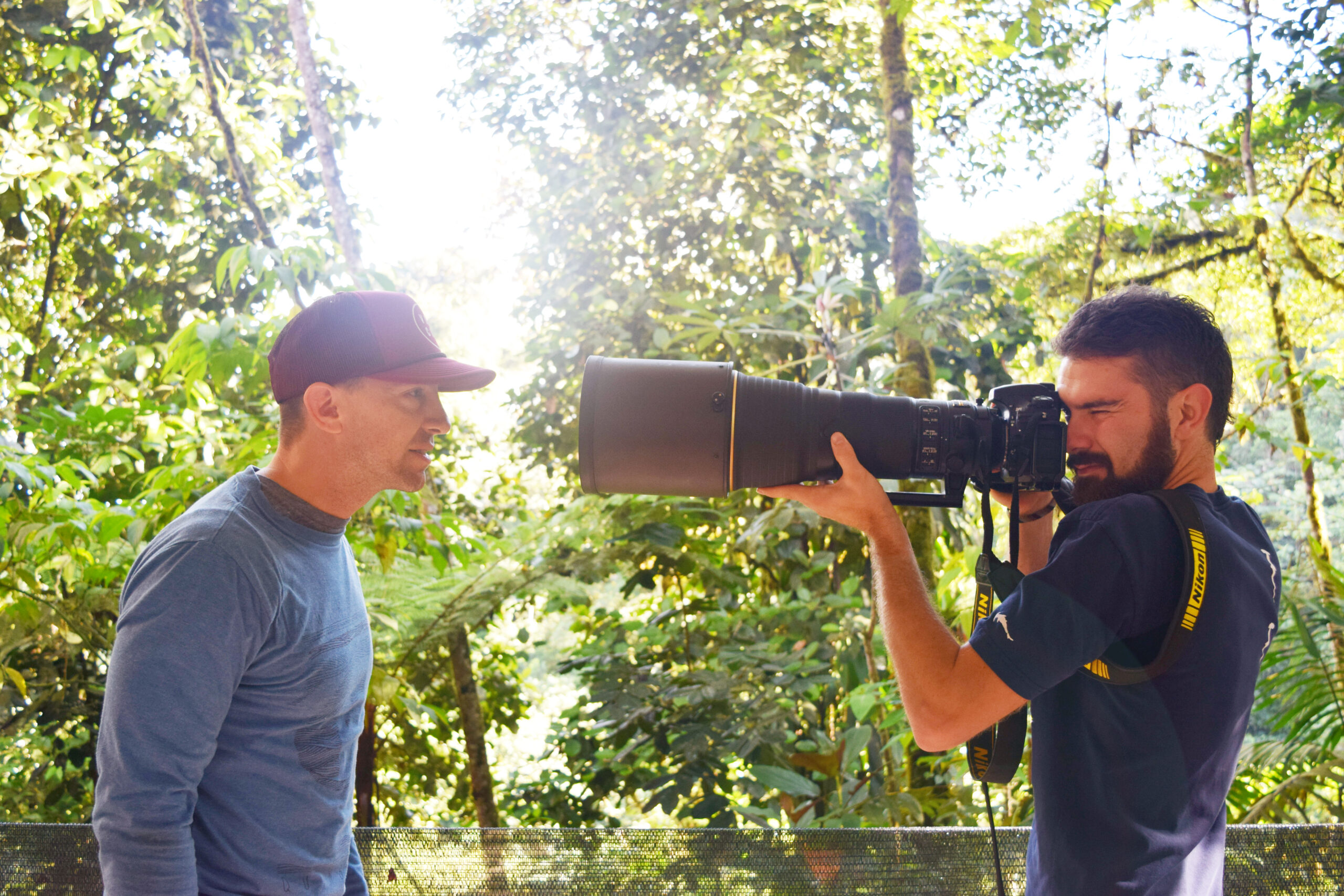
Our Camera Gear

How We Fly
Choosing Your Destination
Guide to...
Japan
Japan, a land where ancient traditions harmonize with cutting-edge technology, captivates with its stunning landscapes, vibrant cities, and cultural heritage, inviting travelers to immerse themselves in the beauty and serenity of its temples, gardens, and culinary delights.
Map
Weather
Itineraries
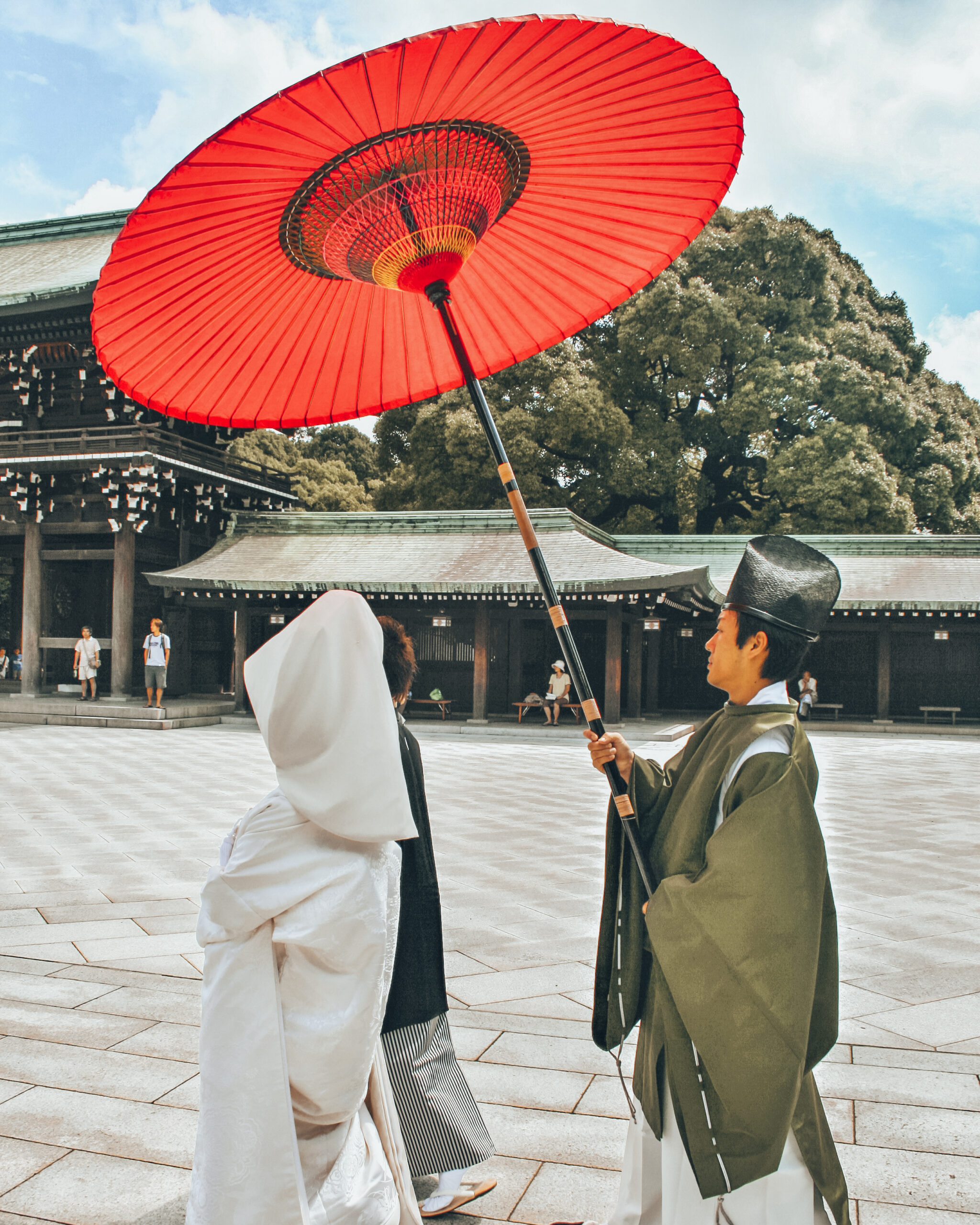
Tokyo
You have a problem – you only have 12 hours in Tokyo, Japan. What can you do? What should you do? Here’s your guide:
The Metro System
Assuming you’re already in the city (Narita International is about an hour from downtown Tokyo)…hop on the clean, complex, amazing, incredibly efficient metro system. It’s one of the best forms of public transportation I’ve ever taken. It’s definitely something you shouldn’t miss. Heck, it’ll even make you feel like a pseudo-local!
Before you get into the underground labyrinth, however, grab yourself a free map of the Tokyo metro in English. It’s easy to go to the official Tokyo metro website itself to get the map. You can quickly study and learn the different lines, which are all color coded. Next you should buy a PASMO card from a machine and recharge it when you get low.
The Tokyo subway lines (over 27 of them) run from about 5am until around midnight. However, you definitely want to avoid the rush hours of 7:30am-9:30am and 5:30pm-7:30pm. This last bit is really important, lest you be spending your time waiting, cramped, and annoyed.
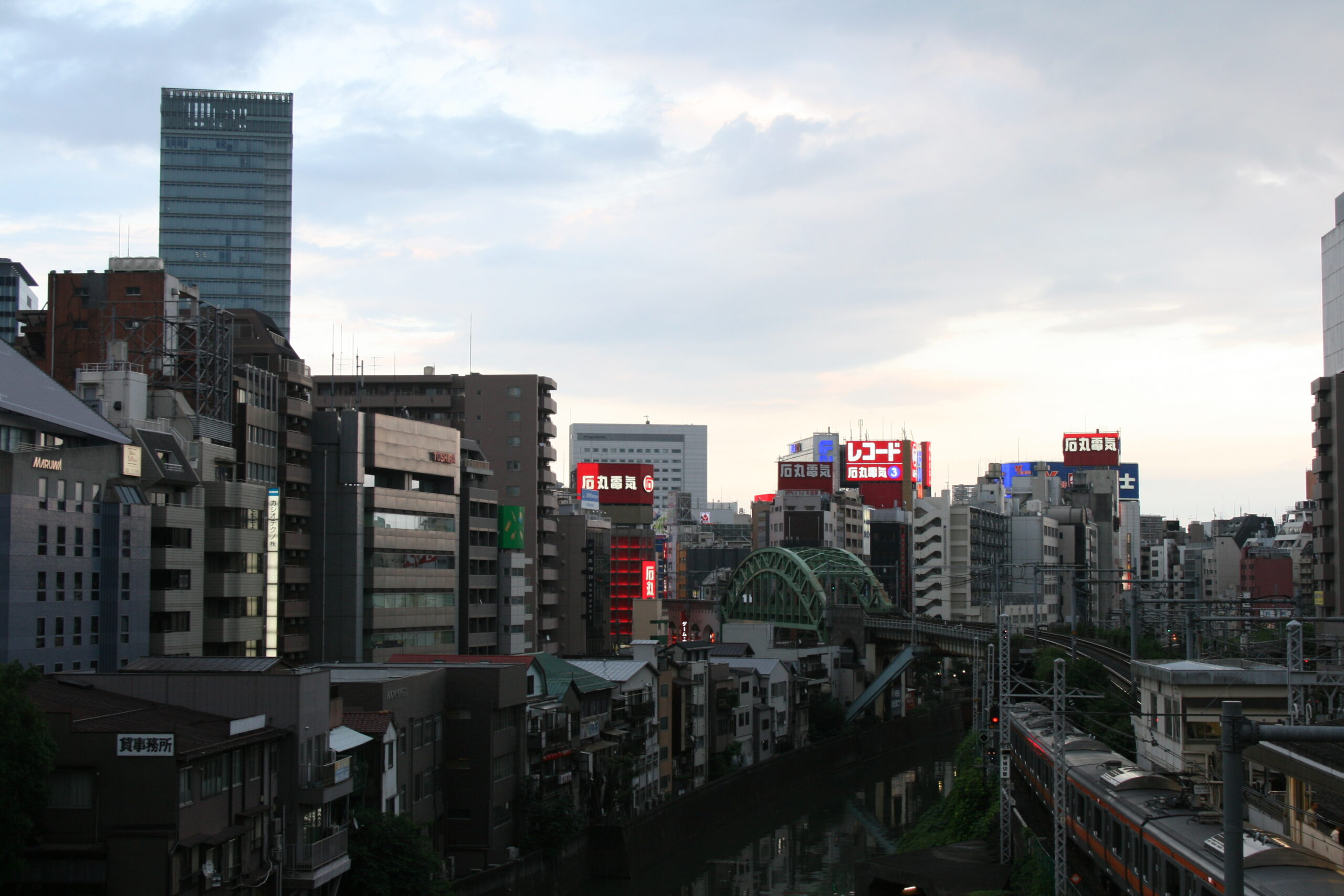
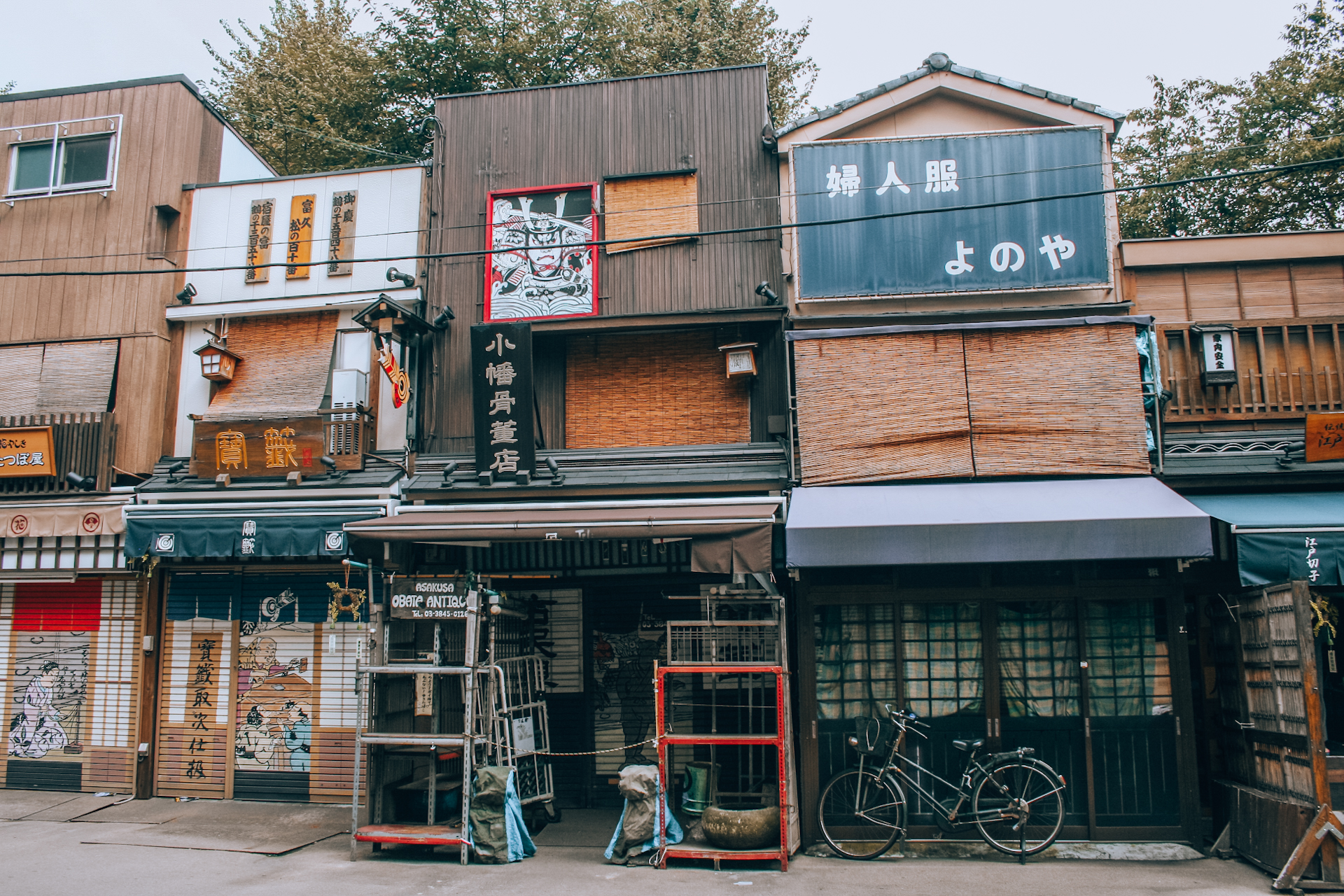
Tsukiji Fish Market
If you’re in the city in the morning, a great option is Tsukiji fish market, the world’s largest, busiest fish market. The best thing is, it’s free to visit.
If you want to do it right, you should go at 5 a.m. to catch the live tuna auctions (note: there’s limited availability). The problem is, no trains are running at 4am. So, if you’re limited on time, you may miss the auctions, but the market is still worth the trip. By 9am the market will start to close.
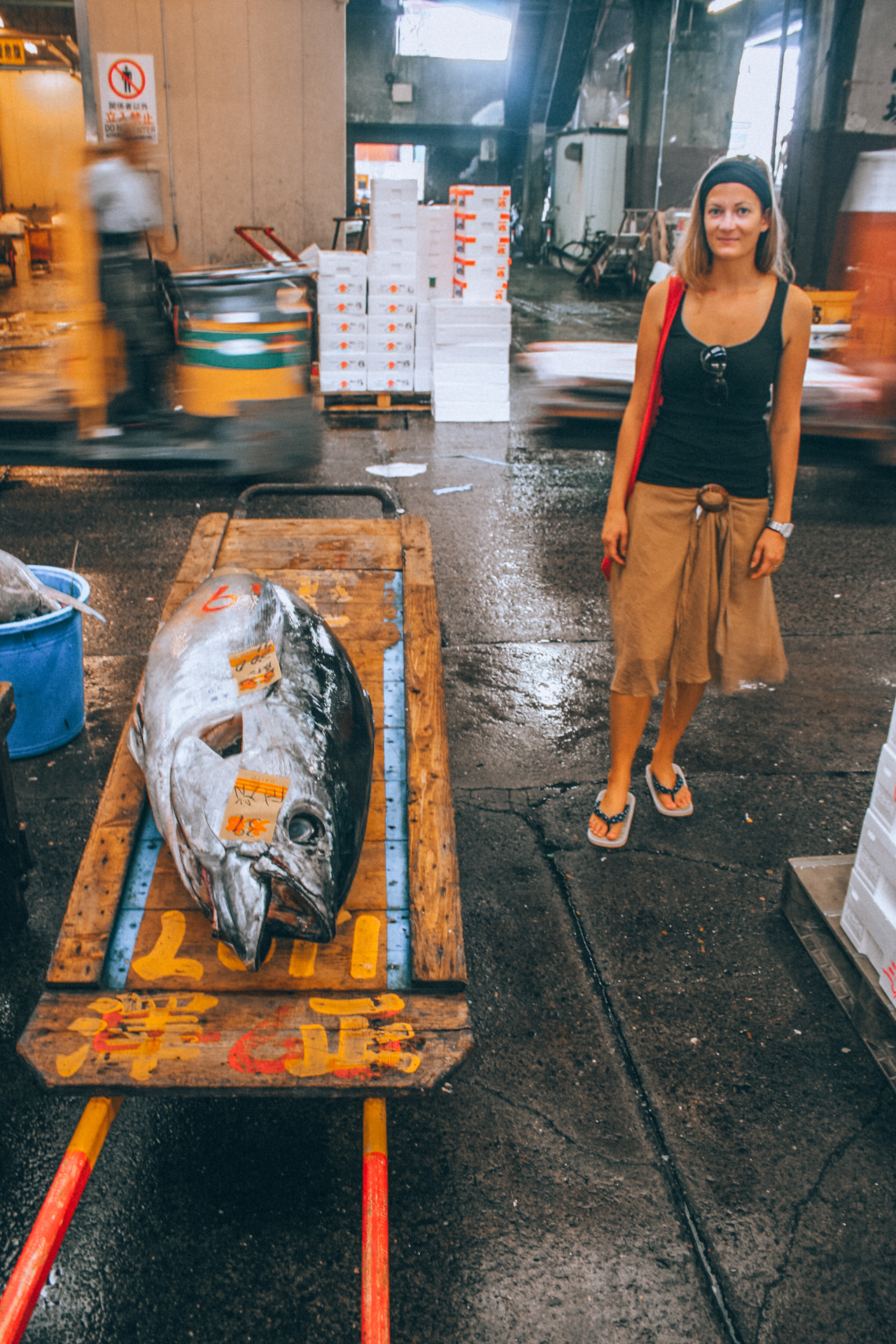
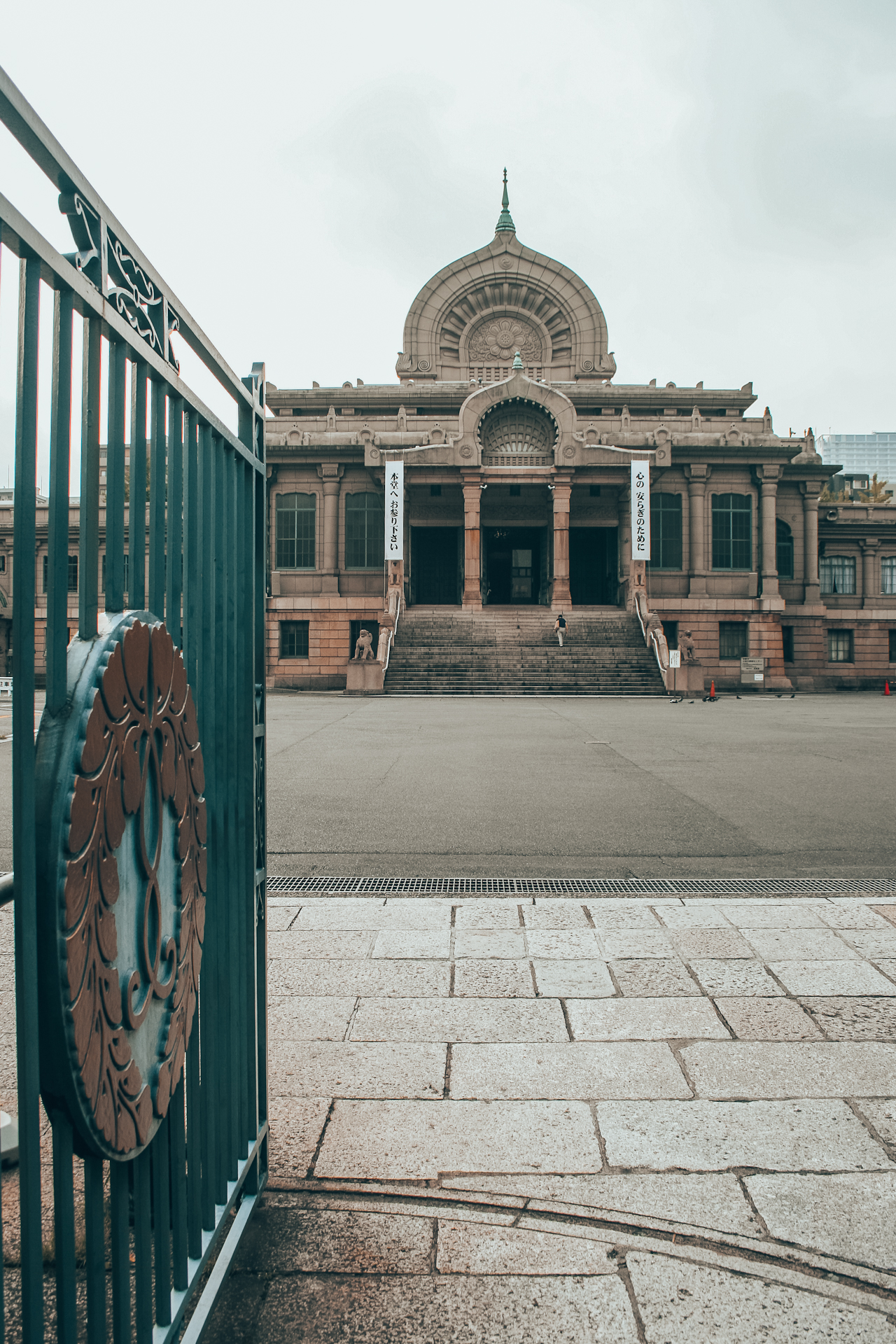
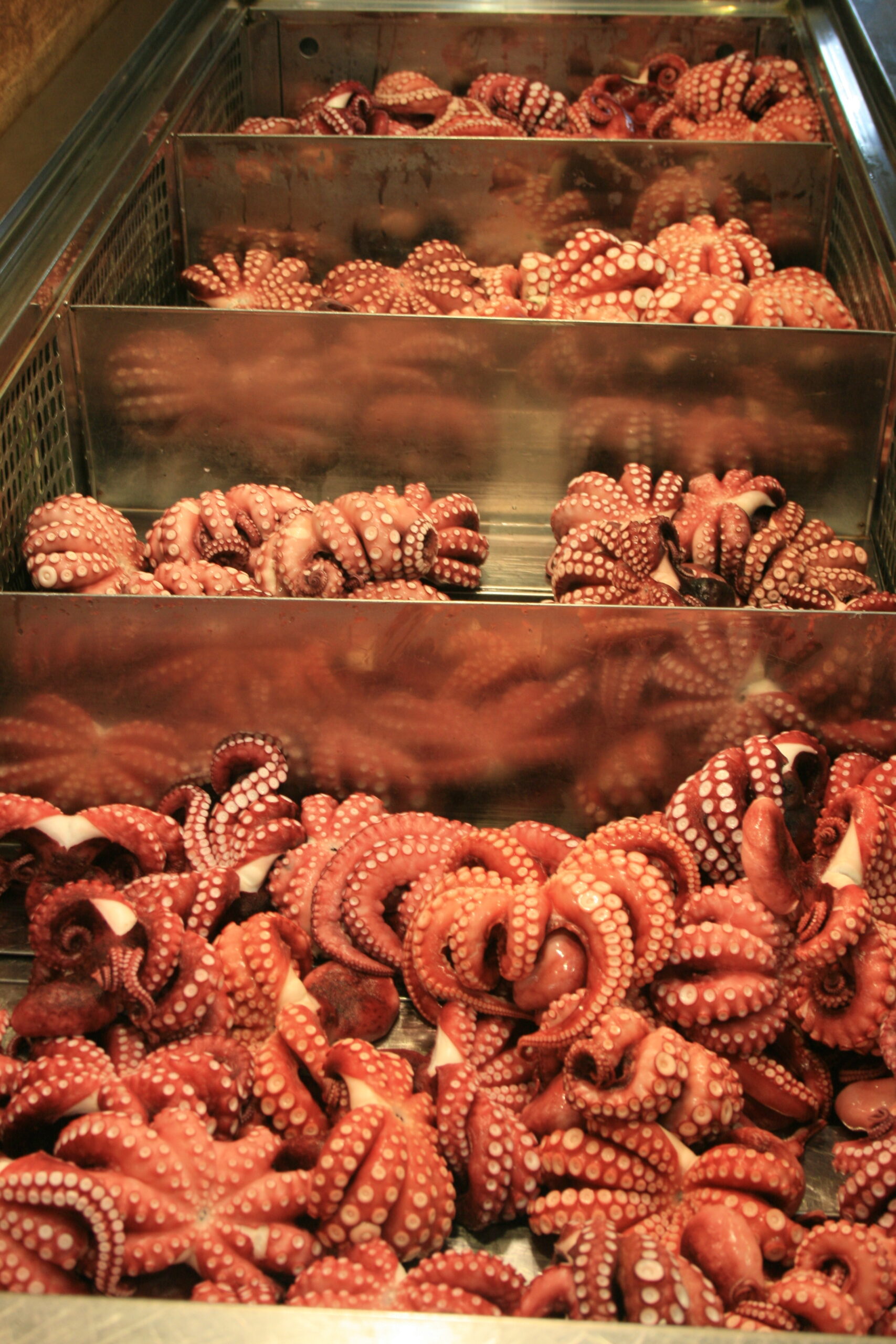
Finding the market can be a bit difficult. It’s located about 1.5km south of Tokyo Station. Just be on the lookout for the Namiyoke Inari Jinja Shrine, a Shinto shrine built in 1659 to protect workers from rough seas. The Shrine is at the entrance to the market.
Tsukiji Market itself is not open every day. A list of holidays is actually available on the Tsukiji Market website (click on the ‘Tsukiji Market Calendar’ – the dates marked in red are a “no go”). An English guidesheet and map are also available at the market’s information booth.
Once you’re done with the market, you’ll want to eat…um…fish, probably. So head over to the amazingly fresh Sushi Dai (Tsukiji Market Part 6 Bldg. 5-2-1 Tsukiji-shijo, Chuo-ku, Tokyo, Japan;). It will change your life.
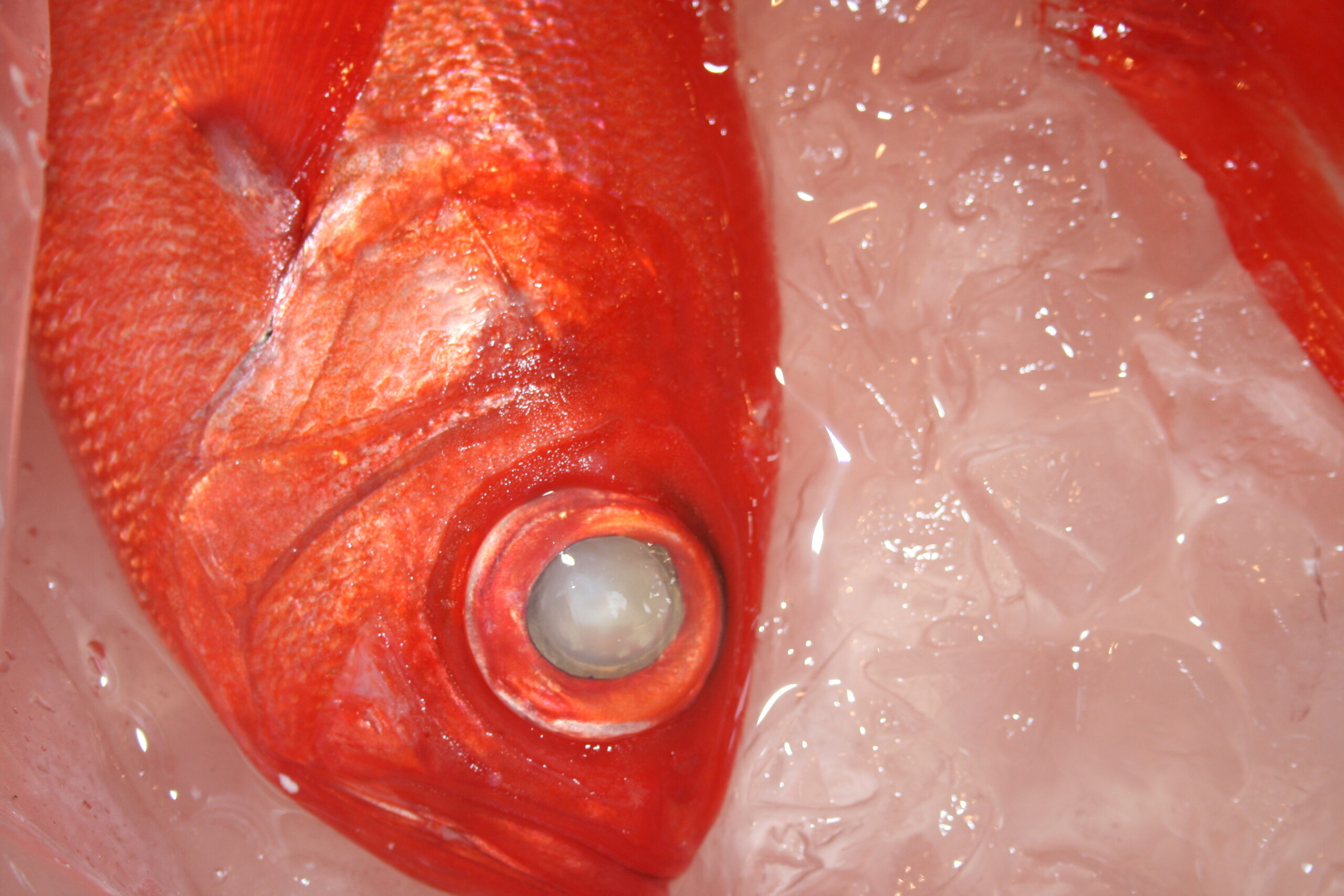
Top Five Restaurants in tokyo
Narisawa is renowned for its innovative take on Japanese cuisine, combining French techniques with sustainable and locally sourced ingredients. Chef Yoshihiro Narisawa’s dishes are a celebration of nature, offering a unique culinary experience that changes with the seasons.
Sukiyabashi Jiro Sukiyabashi Jiro is a world-famous sushi restaurant helmed by Jiro Ono, a master sushi chef. Known for its meticulously crafted sushi, this Michelin-starred establishment offers an unparalleled dining experience that sushi enthusiasts around the globe seek out.
Den is celebrated for its playful and creative approach to traditional kaiseki dining. Chef Zaiyu Hasegawa’s inventive dishes not only highlight seasonal ingredients but also tell a story, making each visit to Den a delightful and memorable journey.
Ishikawa is a three-Michelin-star kaiseki restaurant offering an intimate and exquisite dining experience. Chef Hideki Ishikawa’s menu features beautifully presented dishes that emphasize the natural flavors of premium Japanese ingredients.
Quintessence is a three-Michelin-star French restaurant that pushes the boundaries of contemporary French cuisine. Chef Shuzo Kishida’s focus on simplicity, seasonality, and precise technique results in dishes that are both elegant and flavorful.
Top Five Restaurants in tokyo
Oakwood Premier Tokyo offers luxurious serviced apartments in the heart of the city, providing both comfort and convenience for long and short-term stays. With its sophisticated design, top-notch amenities, and prime location near Tokyo Station, it’s an ideal choice for business and leisure travelers alike.
Hotel LiVEMAX Asakusabashi-Eki Kitaquchi provides budget-friendly accommodation with easy access to major Tokyo attractions. The hotel features modern, compact rooms with essential amenities, making it a practical option for travelers seeking affordability and convenience.
Toranomon Hills, part of The Unbound Collection by Hyatt, blends modern luxury with Japanese hospitality. Located in a vibrant district, it offers stylish rooms, fine dining options, and state-of-the-art facilities, ensuring a comfortable and memorable stay.
Nishishinjuku Green Hotel is a cozy, eco-friendly hotel situated in the bustling Shinjuku area. With its emphasis on sustainability and comfort, it provides guests with a relaxing retreat after exploring the energetic city, featuring well-appointed rooms and friendly service.
Tokyo Akatsuki Hotel combines traditional Japanese aesthetics with modern comforts. Located in a central area, it offers guests a serene and authentic experience with beautifully designed rooms and attentive service, making it a great base for exploring Tokyo.
Asakusa Neighborhood and Senso-ji Temple
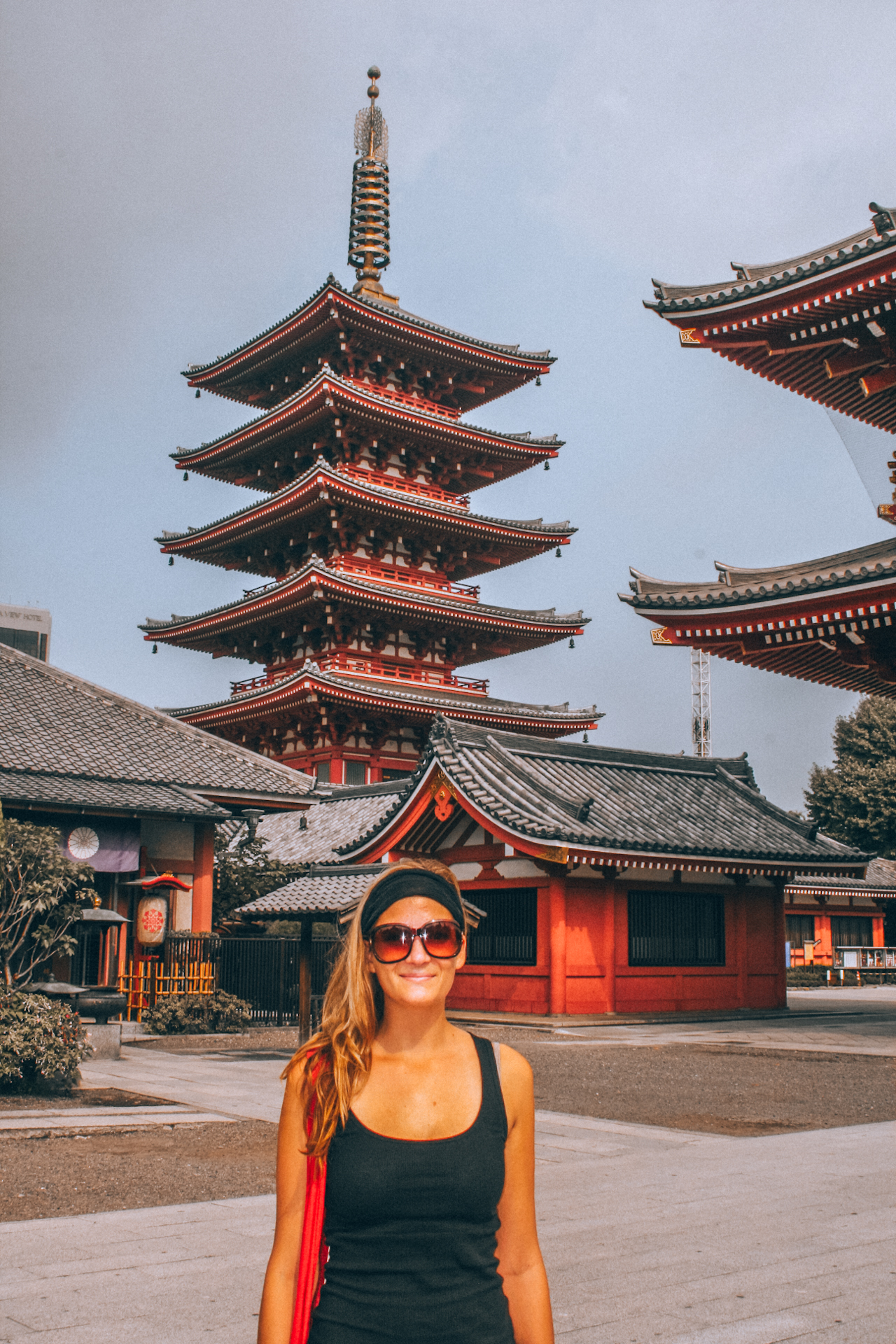
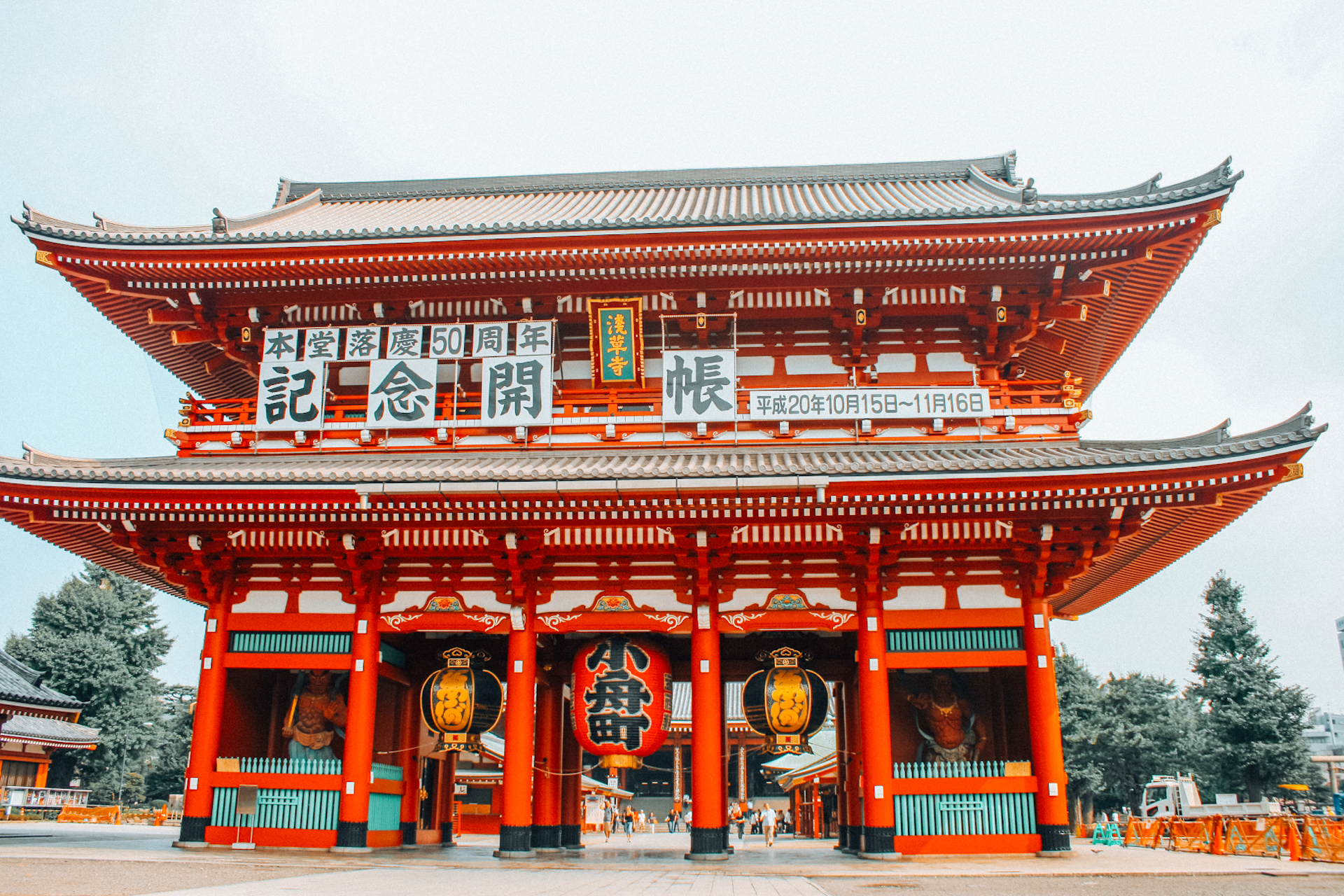
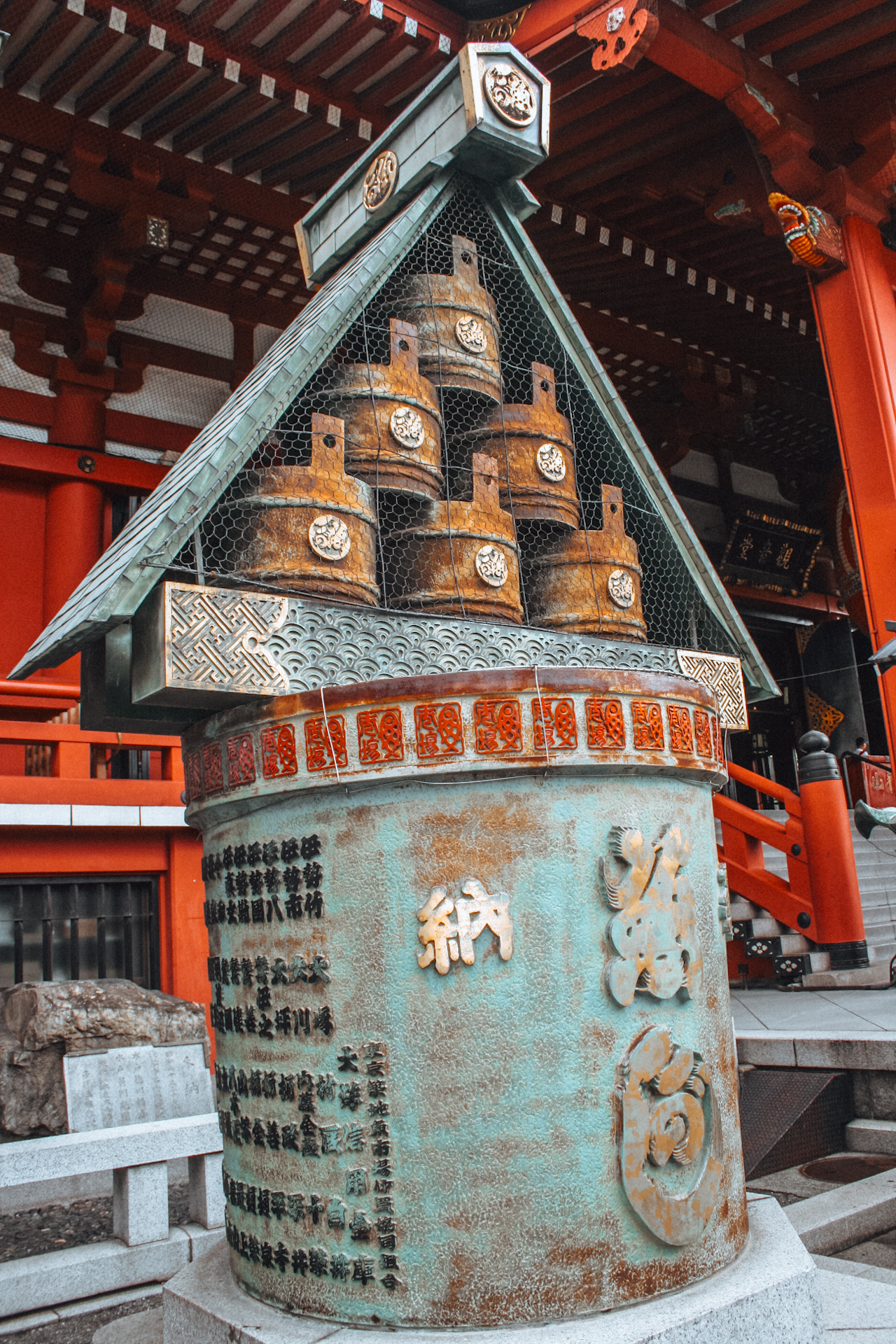
Ok, on to the amazing, touristy, must-do things. Asakusa, an entertainment district in Taito, Tokyo, is an incredible area filled with festivals, temples, and Tokyo’s oldest geisha district (with 45 actively working geisha). Asakusa is served by the Ginza Subway Line, Asakusa Subway Line, Tsukuba Express and Tobu Railways. In the district, which is easily patrolled by foot, quickly head over to Nakamise street where you can grab traditional food, snacks, and souvenirs.
Sensory temple, completed in 645 and therefore Tokyo’s oldest temple, has a cool story behind it. According to legend, in the year 628, two brothers who were fishing in the Sumida River ended up fishing out a statue of Kannon, the goddess of mercy. They kept throwing it back into the river but it always returned to them. Thus, the temple was built for Kannon.
Harajuku
Harajuku is simply the area around Harajuku Station (between Shinjuku and Shibuya on the Yamanote line). It’s a fashion district full of people who dress up like they’re on the show Toddlers and Tiaras. Basically, it’s a great place to shop and people watch.
Many of the stores lean heavily on Western fashion and culture, but for some reason find a way to make it all way cooler. You’ll definitely find a lot of amazing stores with retro US clothing. Problem is…buying an 80s t-shirt from your alma mater will run you about $100. Yikes.
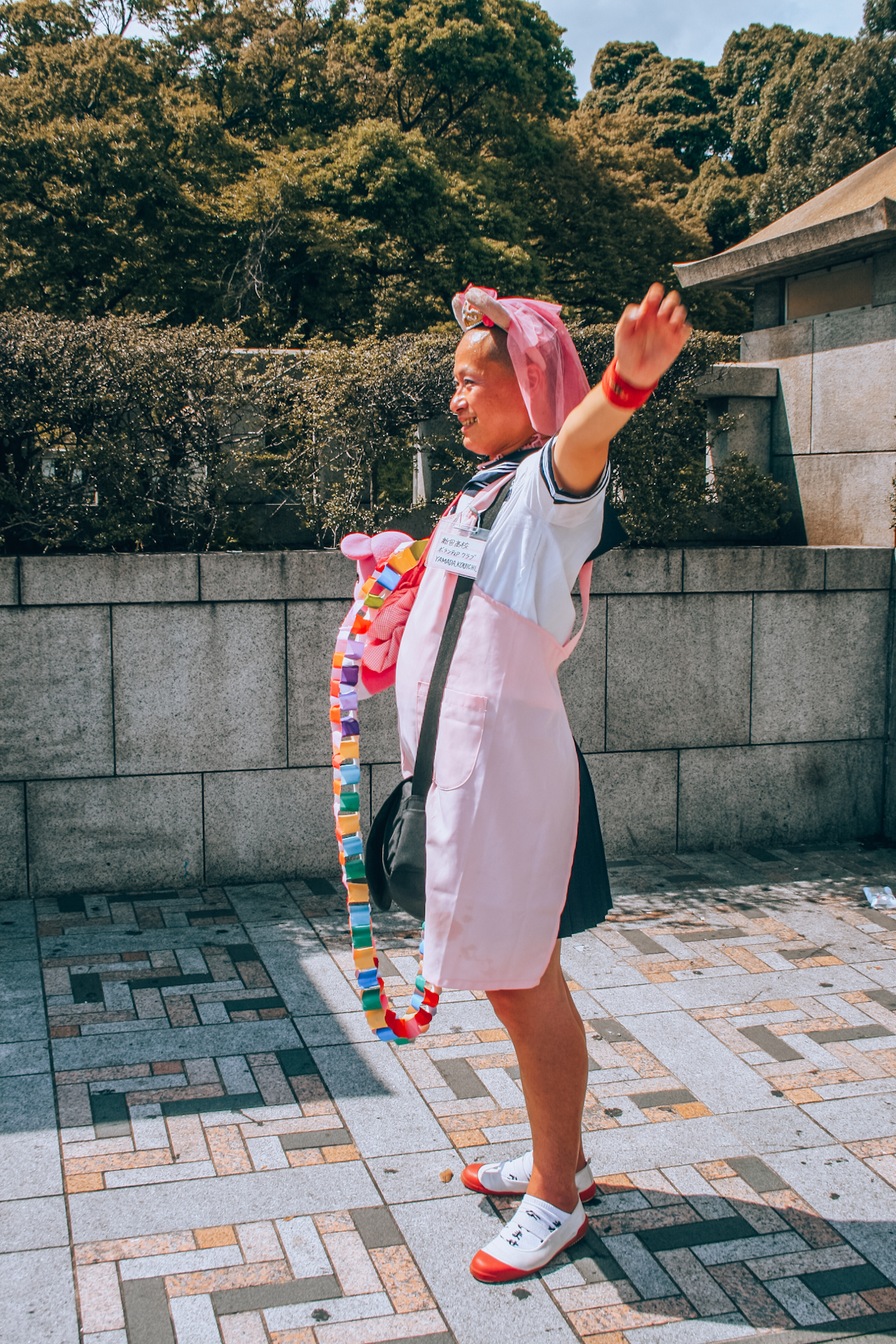
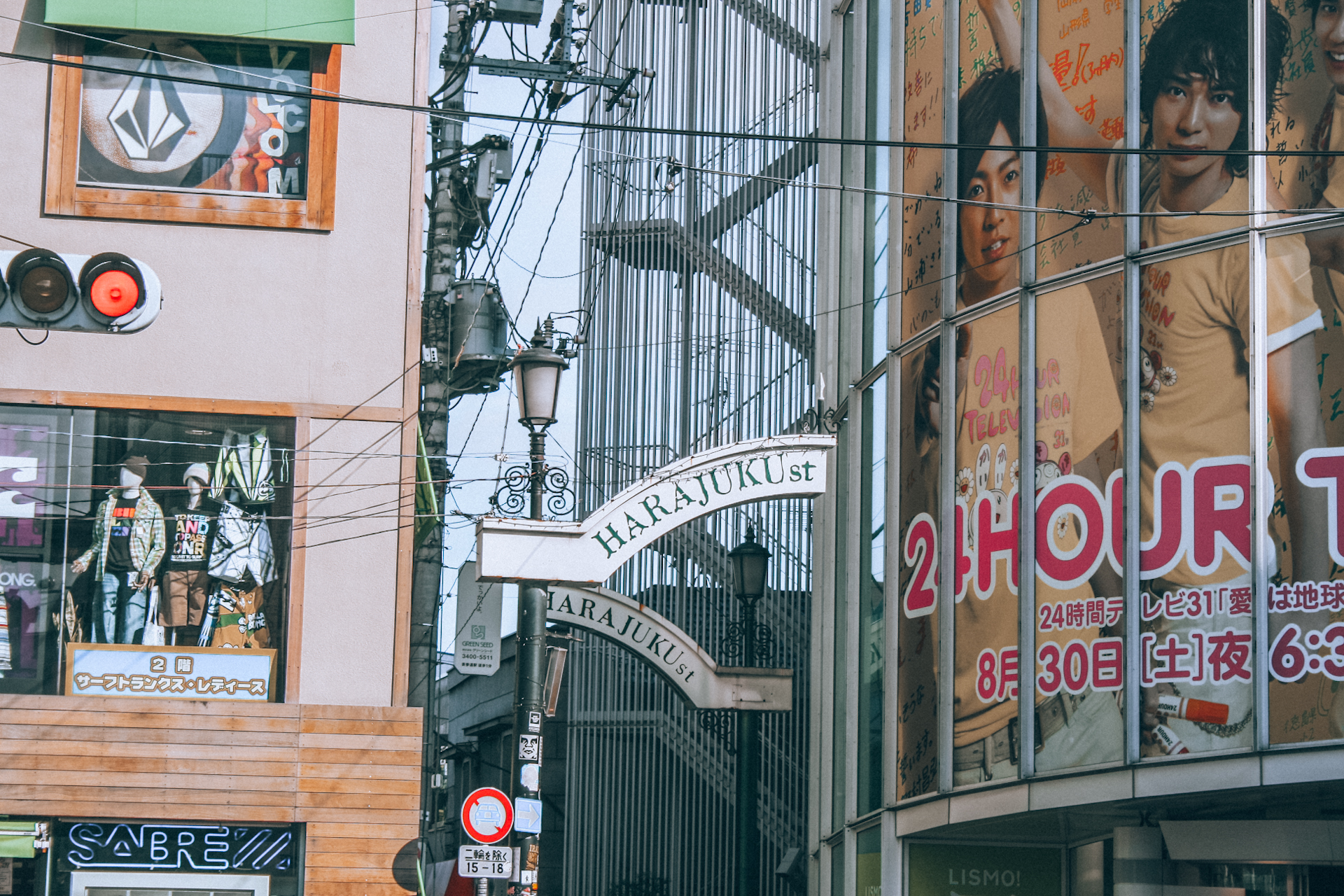
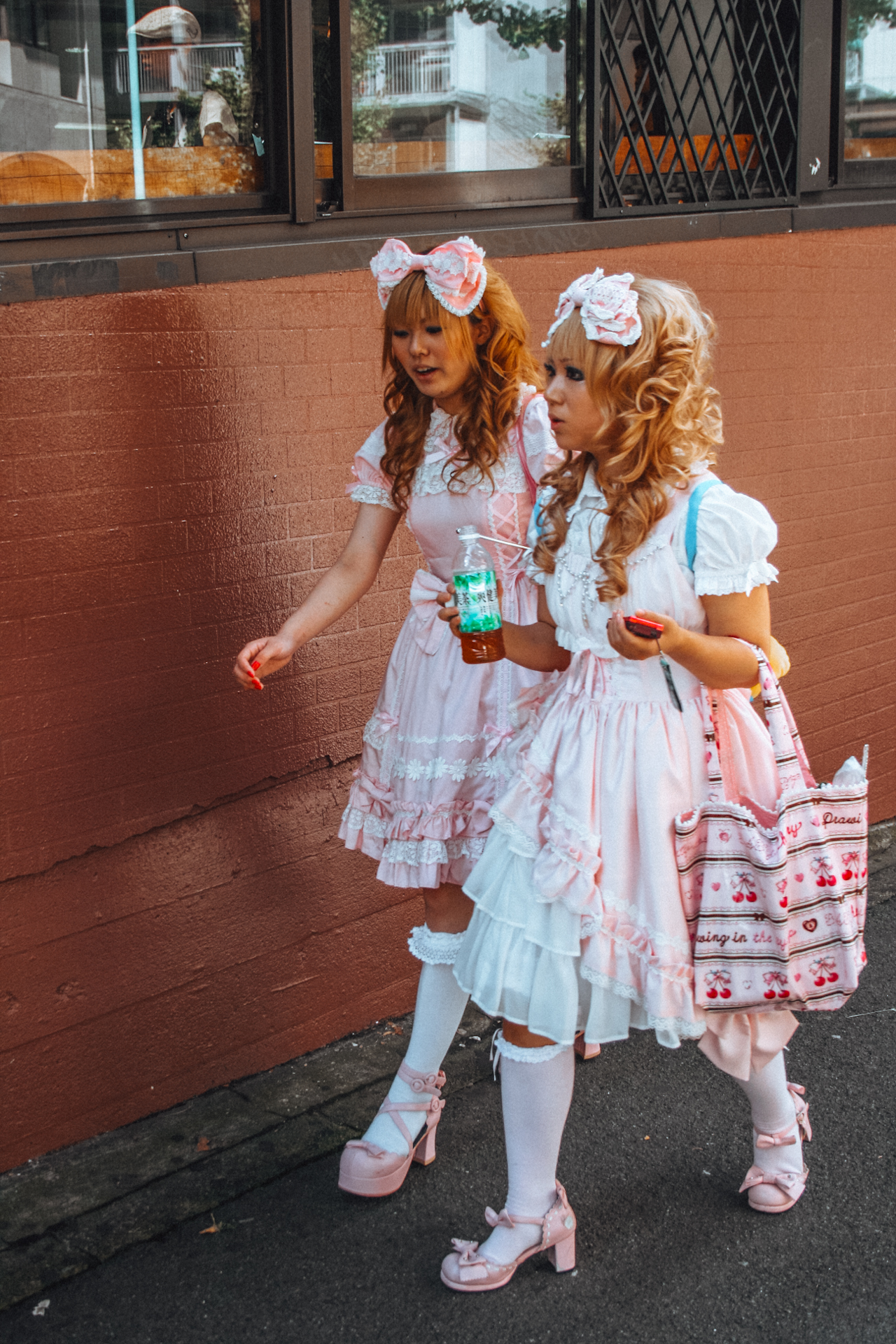
Meiji Jingu Shrine in Shibuya
Within walking distance of Harajuku – just west of the railway tracks – is Meiji Jingu shrine. The shrine, which was dedicated to the deified spirits of Emperor Meiji (the first emperor of modern Japan) and Empress Shoken, is located in the middle of a forested area. It’s great for a nice stroll away from the busy streets.
The shrine, which was rebuilt after WWII and, when we saw it, was being renovated, is one of the Japan’s most popular shrines. So don’t expect to have it to yourself. However, if you’re lucky, maybe you’ll get to witness a traditional Shinto wedding.
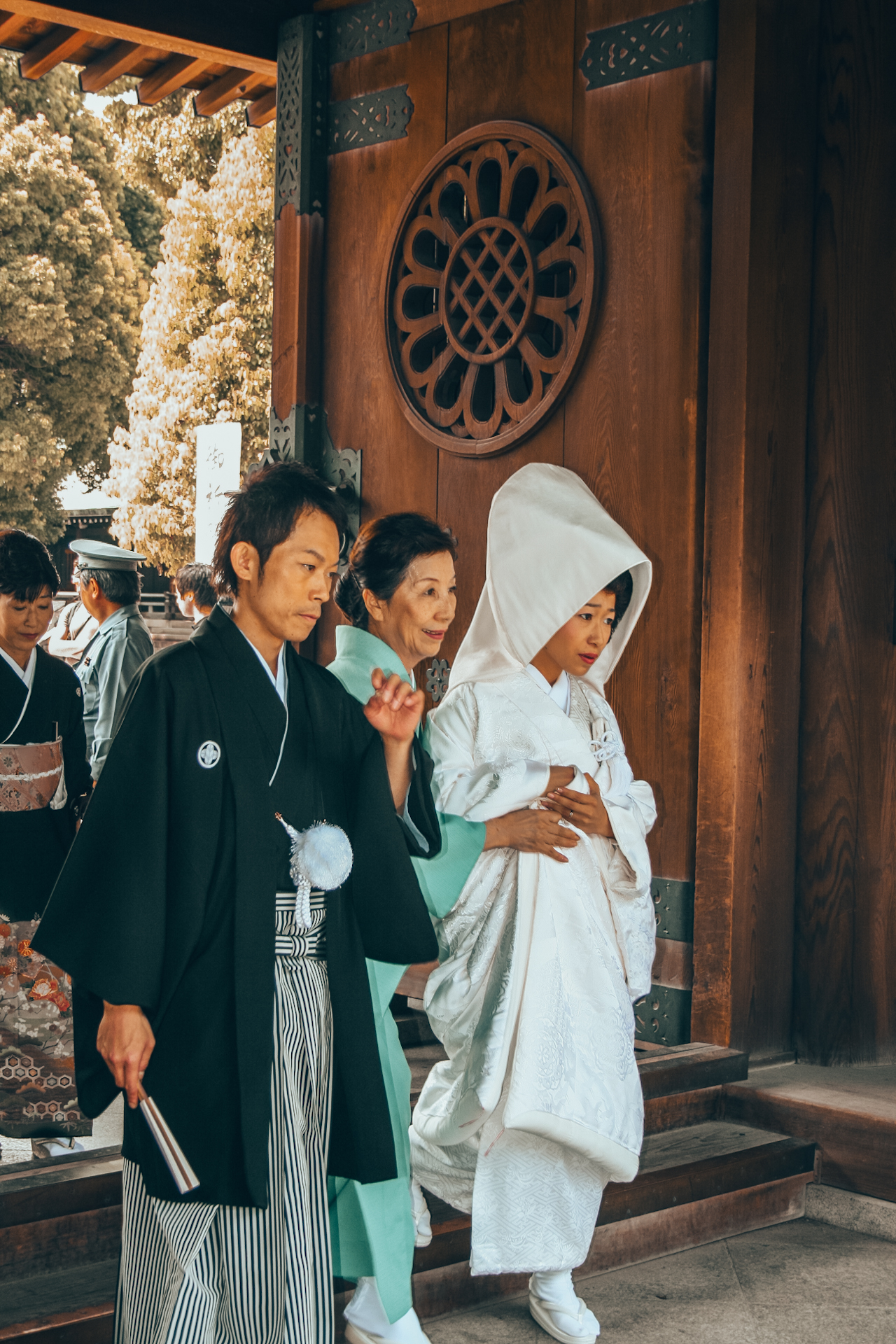
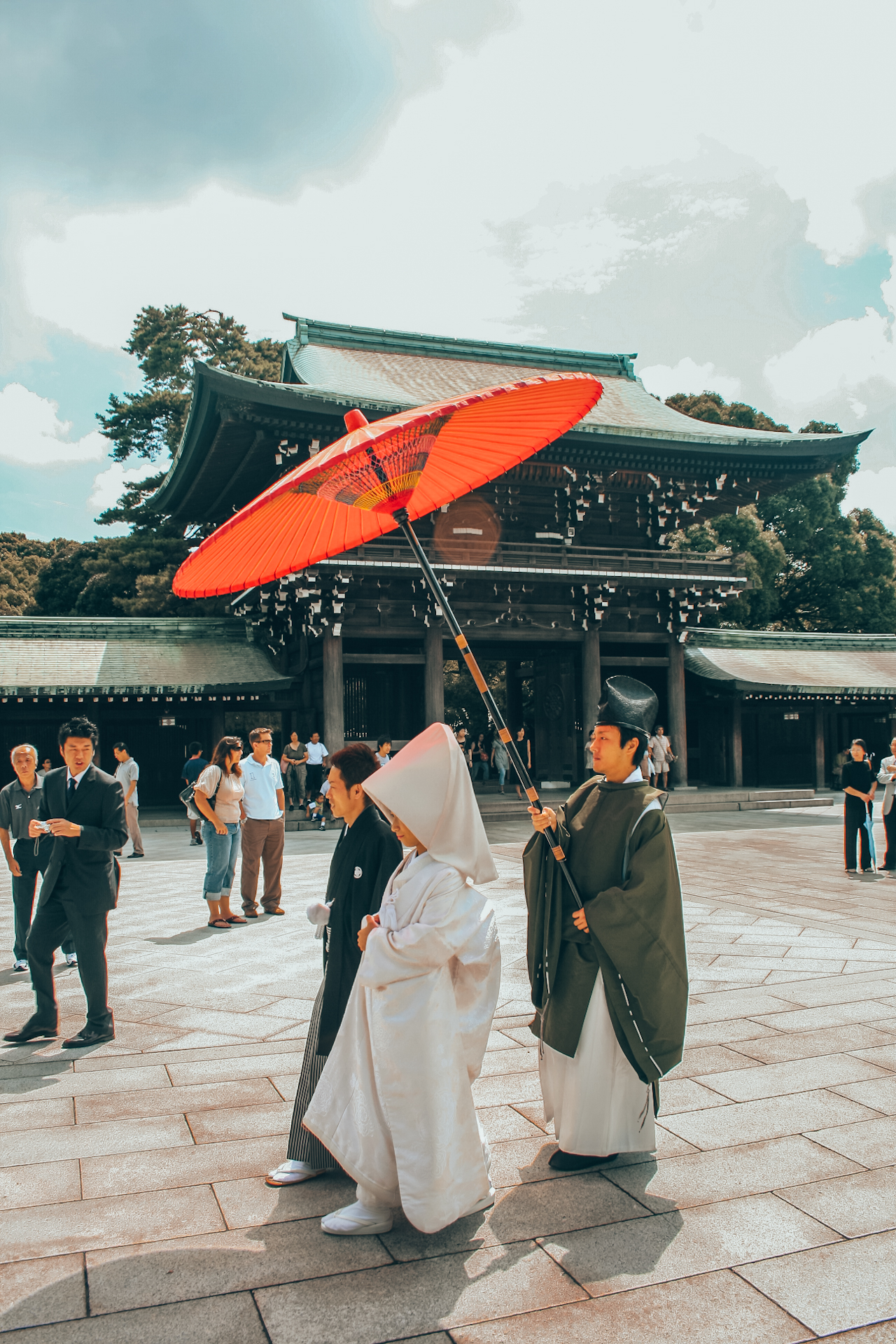
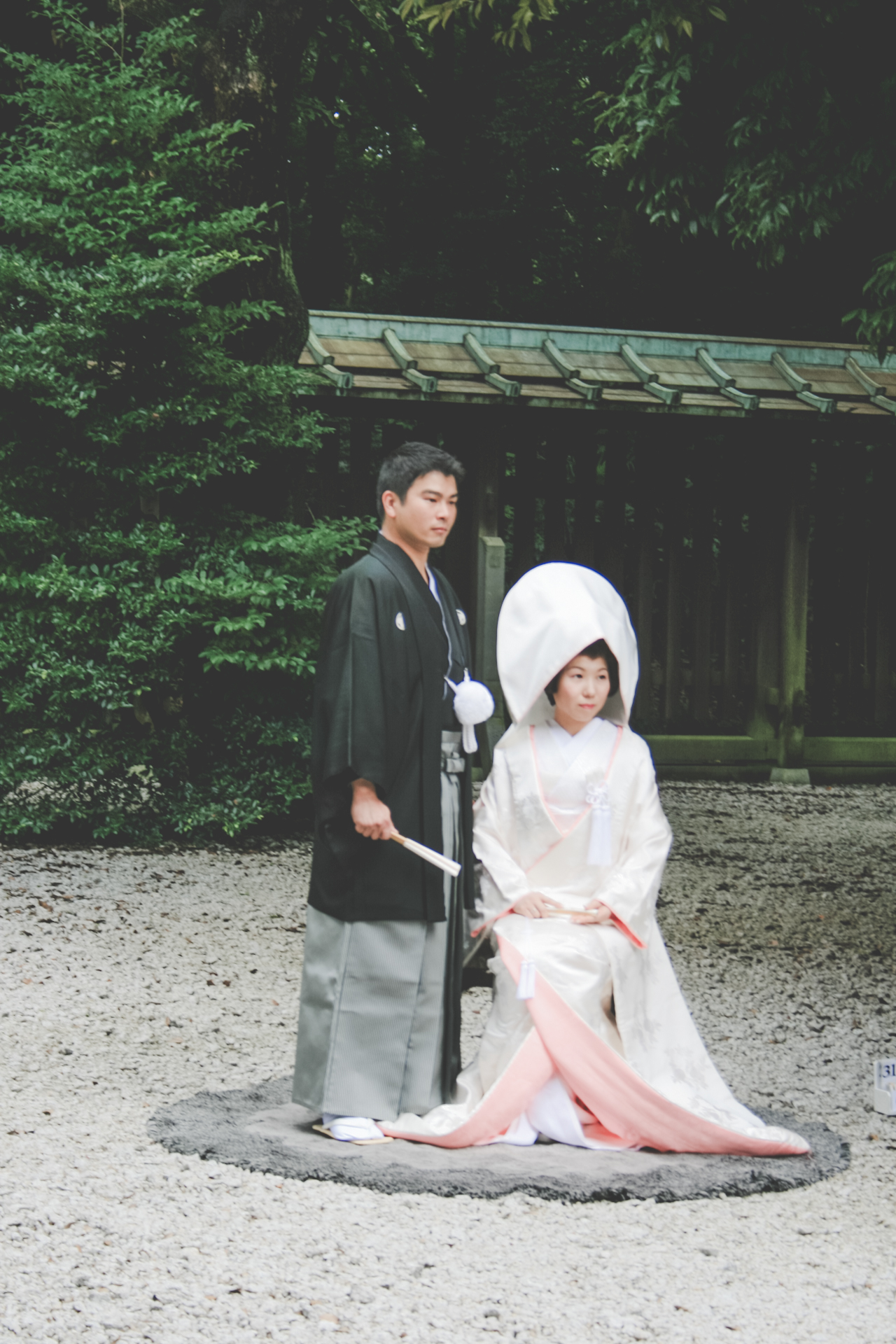
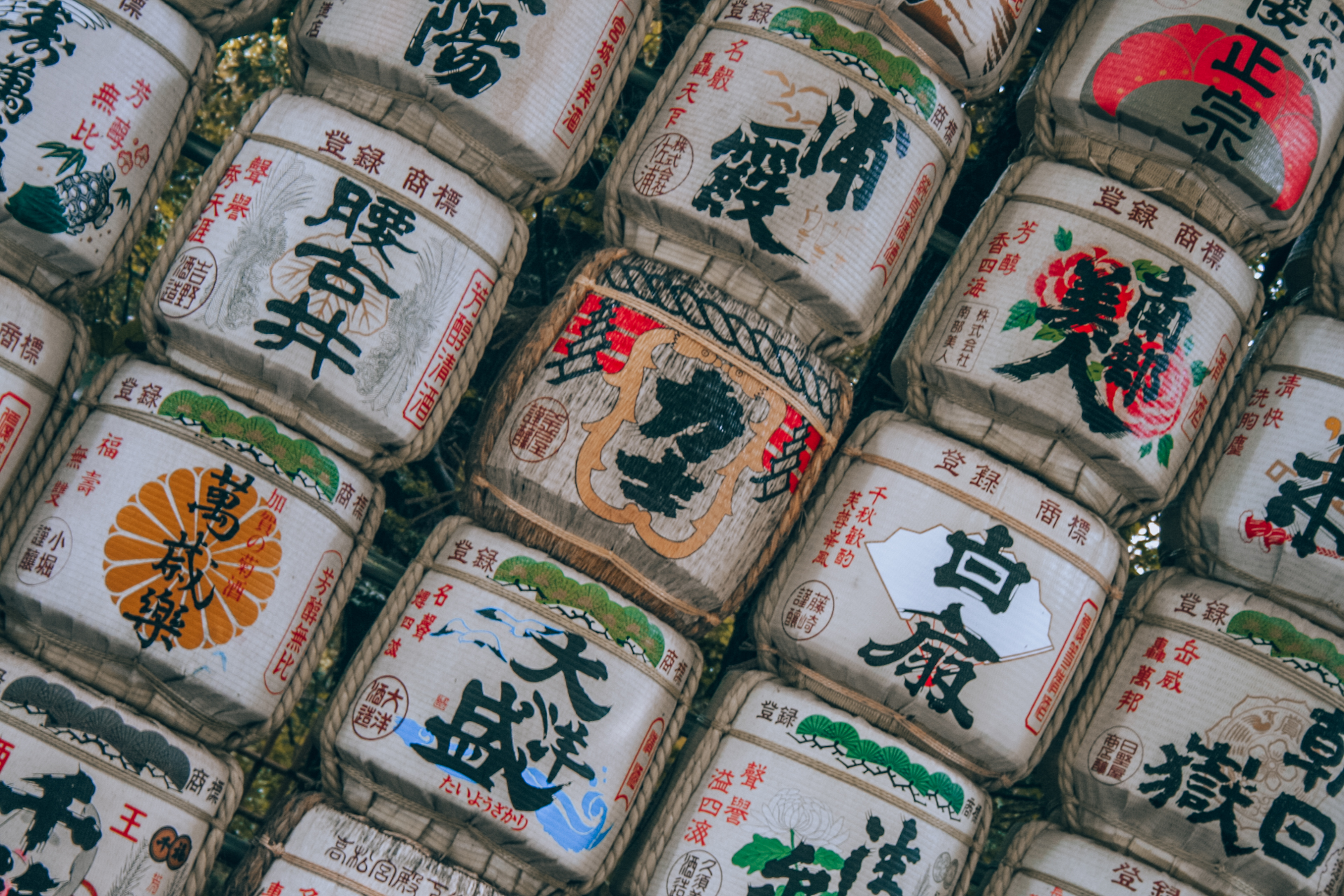
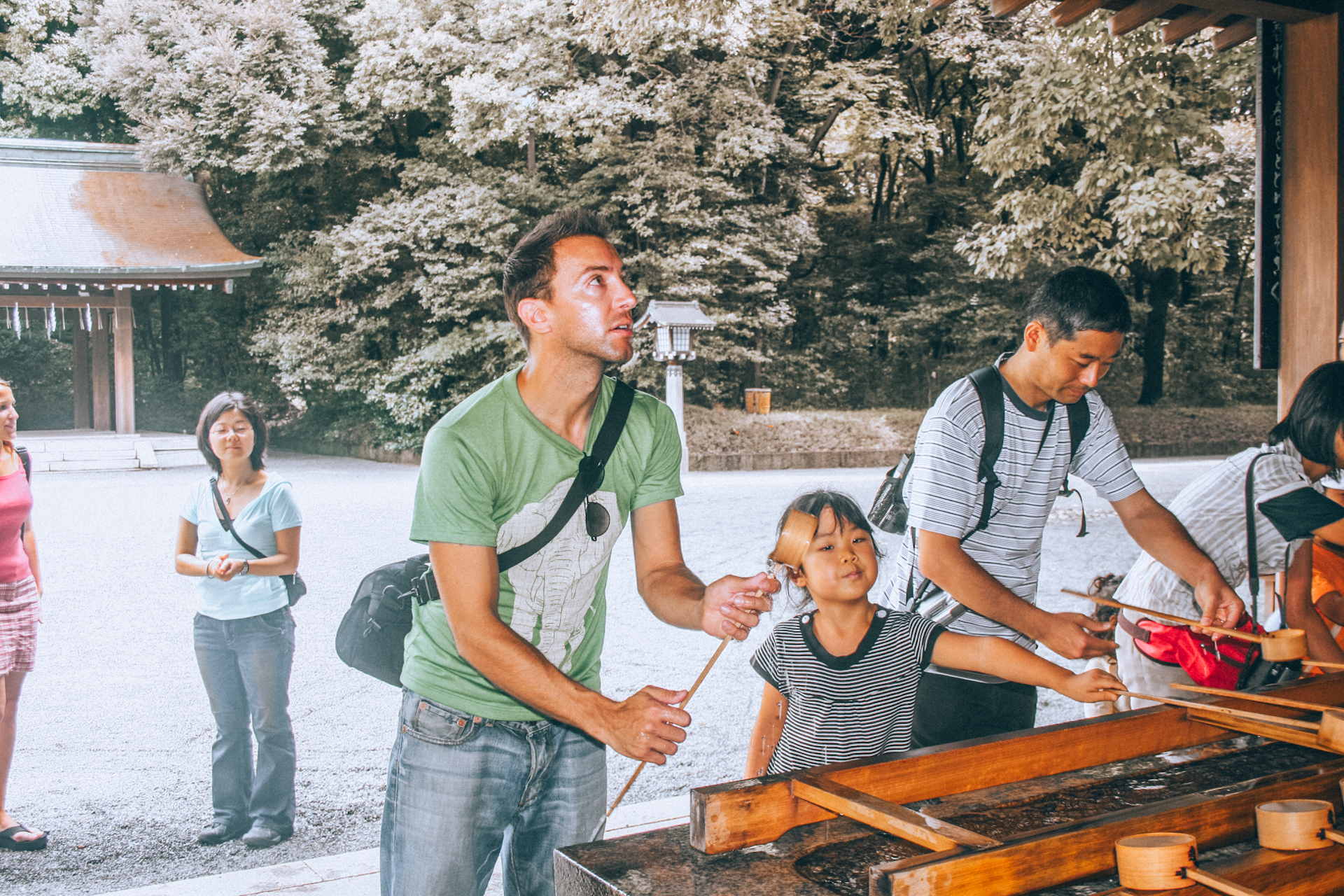
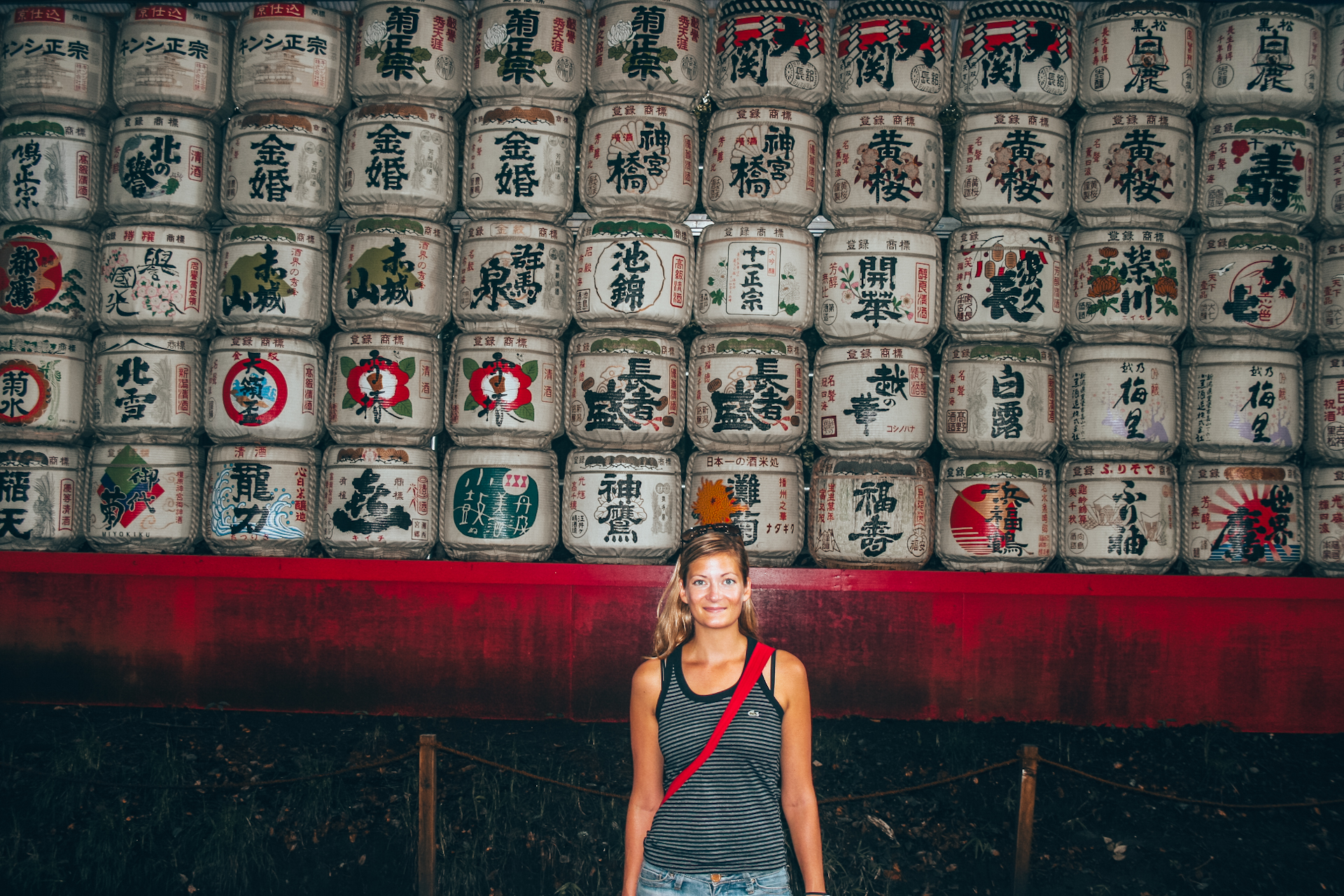
FAQ's
What are the main things to do with kids in Japan?
Japan offers a wide range of activities and attractions that are great for kids. Here are some of the main things to do with children in Japan:
1. Visit theme parks: Japan has many fantastic theme parks, such as Tokyo Disneyland, DisneySea, Universal Studios Japan in Osaka, and Fuji-Q Highland near Mount Fuji.
2. Explore animal cafes: Japan is known for its unique animal cafes, where children can interact with cats, rabbits, owls, and even hedgehogs.
3. Enjoy interactive museums: Museums like the Ghibli Museum in Tokyo, the Cup Noodles Museum in Yokohama, and the Osaka Science Museum offer hands-on exhibits and activities for kids.
4. Visit aquariums: Japan has many impressive aquariums, such as the Osaka Aquarium Kaiyukan, Sunshine Aquarium in Tokyo, and the Okinawa Churaumi Aquarium.
5. Attend festivals: Japanese festivals, like the Sanno Matsuri in Tokyo or the Gion Matsuri in Kyoto, often feature colorful parades, traditional performances, and fun activities for children.
6. Play in parks and playgrounds: Japan has many beautiful parks and playgrounds, such as the Ueno Park in Tokyo and the Nara Park, where kids can run around and enjoy nature.
7. Visit kid-friendly temples and shrines: Some temples and shrines, like the Fushimi Inari Shrine in Kyoto or the Gotokuji Temple in Tokyo (known for its lucky cat figurines), can be fun for children to explore.
8. Enjoy family-friendly restaurants: Many restaurants in Japan cater to families, offering kid-friendly meals and sometimes even play areas.
9. Participate in hands-on activities: Children can experience traditional Japanese arts and crafts, such as origami, calligraphy, or pottery-making, at various workshops and studios throughout the country.
What is Japan famous for?
Japan is famous for many things, including:
1. Technology: Japan is known for its advanced technology, including robotics, electronics, and automobiles.
2. Pop culture: Anime, manga, video games, and J-pop music have gained worldwide popularity.
3. Cuisine: Japanese food, such as sushi, ramen, tempura, and wagyu beef, is enjoyed globally.
4. Traditional arts: Calligraphy, ikebana (flower arrangement), tea ceremonies, and kabuki theater are well-known aspects of Japanese culture.
5. Fashion: Japanese fashion trends, such as Harajuku street style and Lolita fashion, have influenced global fashion.
6. Architecture: Traditional Japanese architecture, such as temples, shrines, and gardens, as well as modern buildings, are admired for their aesthetic and design.
7. Natural beauty: Japan’s stunning landscapes include Mount Fuji, cherry blossom trees, and hot springs (onsen).
8. Punctuality: Japan’s public transportation system is famous for its efficiency and punctuality.
9. Cleanliness: Japanese cities and public spaces are known for being remarkably clean and well-maintained.
10. Unique attractions: Japan has many one-of-a-kind experiences, such as robot restaurants, cat cafes, and themed parks like Tokyo Disneyland and Universal Studios Japan.
11. Work ethic: The Japanese are known for their strong work ethic and dedication to their jobs.
12. Politeness: Japan is famous for its polite and respectful culture, with customs such as bowing and using honorific language.
What power plug type does Japan use?
Japan uses two types of power plugs and outlets:
1. Type A: This is the same type used in the United States, Canada, Mexico, and several other countries. It has two flat parallel pins.
2. Type B: This plug is similar to Type A but has an additional round grounding pin below the two flat parallel pins. It is also used in the United States, Canada, Mexico, and other countries.
The voltage in Japan is 100 Volts, which is different from the 120 Volts used in the United States and some other countries. The frequency in eastern Japan (including Tokyo) is 50 Hz, while western Japan (including Osaka and Kyoto) uses 60 Hz.
It’s important to note that some devices, particularly those that use heating elements or motors (e.g., hair dryers, electric shavers), may not work properly with Japan’s voltage, even with a plug adapter. In such cases, you may need a voltage converter or a dual-voltage appliance designed to handle both 100V and 120V. Most modern electronics, such as smartphones, laptops, and camera chargers, are dual-voltage and should work fine with just a plug adapter.
Is Japan safe?
Yes, Japan is generally considered one of the safest countries in the world for both locals and tourists. Here are a few reasons why:
1. Low crime rates: Japan has very low rates of violent crime, theft, and drug-related offenses compared to many other countries.
2. Strong sense of social order: Japanese society places a high value on following rules, respecting others, and maintaining social harmony, which contributes to a safe environment.
3. Strict gun control: Japan has very strict laws regarding the possession and use of firearms, which results in extremely low rates of gun-related crimes.
4. Efficient police force: Japan’s police force is known for being highly efficient, responsive, and approachable.
5. Safe public transportation: Japan’s public transportation system, including trains and buses, is not only efficient but also very safe, with low rates of crime and harassment.
6. Safe streets, even at night: In most Japanese cities, it is common for people to walk alone at night without fear of crime or harassment.
However, as with any country, it’s always a good idea to take basic precautions, such as being aware of your surroundings, keeping an eye on your belongings, and avoiding unsafe areas, especially late at night. Natural disasters, such as earthquakes and typhoons, can also occur in Japan, so it’s essential to be informed and prepared for such events.
What are the current Japan travel requirements for tourists?
As of May 10, 2024, the travel requirements for tourists visiting Japan would depend on the COVID-19 situation and the policies in place at that time. However, based on the information available in August 2023, here are the general requirements for tourists visiting Japan:
1. Visa: Many nationalities, including the United States, Canada, the United Kingdom, and most European countries, do not require a visa for short-term stays (usually up to 90 days). However, it’s best to check with the Japanese embassy or consulate in your country for the most up-to-date visa requirements.
2. Passport: You must have a valid passport with at least six months of remaining validity from the date of your entry into Japan.
3. COVID-19 vaccination: As of August 2023, Japan does not require proof of COVID-19 vaccination for entry. However, this may change depending on the global situation.
4. COVID-19 testing: Pre-departure or on-arrival COVID-19 testing requirements may vary depending on the country you are traveling from and the current situation in Japan. It’s essential to check the latest requirements before your trip.
5. Quarantine: Quarantine requirements, if any, will depend on the COVID-19 situation and your country of origin. As of August 2023, most visitors do not need to quarantine upon arrival.
6. Health insurance: While not mandatory, it is highly recommended to have travel insurance that covers medical expenses and trip cancellations.
Please note that travel requirements can change rapidly, so it is crucial to check with official sources, such as the Japanese embassy or consulate in your country and the Japan National Tourism Organization (JNTO), for the most up-to-date information closer to your planned travel date.
What key information should a Japan travel guide must include?
A comprehensive Japan travel guide should include the following key information:
1. Visa and entry requirements: Details on visa requirements, passport validity, and any other necessary documents for entering Japan.
2. Transportation: Information on how to get around Japan, including the rail system (JR Pass), buses, subways, taxis, and domestic flights.
3. Accommodation: Options for various types of accommodation, such as hotels, ryokans (traditional Japanese inns), hostels, and capsule hotels.
4. Food and dining: An introduction to Japanese cuisine, including popular dishes, dining etiquette, and restaurant recommendations for various budgets.
5. Culture and customs: Insights into Japanese culture, traditions, customs, and etiquette to help travelers navigate social situations and avoid cultural faux pas.
6. Major cities and regions: Detailed information on popular destinations like Tokyo, Kyoto, Osaka, Hiroshima, and Hokkaido, including top attractions, activities, and local tips.
7. Attractions and activities: Highlights of Japan’s main attractions, such as temples, shrines, museums, theme parks, natural landscapes, and seasonal events like cherry blossom viewing and festivals.
8. Itineraries: Suggested itineraries for various trip durations, interests, and budgets to help travelers plan their routes.
9. Language and communication: Basic Japanese phrases, tips for communicating with locals, and information on translation apps and resources.
10. Money and budgeting: Details on currency, exchange rates, ATMs, credit card acceptance, and tipping customs, along with budget suggestions for various travel styles.
11. Safety and emergency information: Advice on staying safe in Japan, including emergency phone numbers, natural disaster preparedness, and common scams to avoid.
12. Packing tips: Recommendations on what to pack, including clothing for different seasons, electrical adapters, and essential items to bring.
13. Seasonal considerations: Information on Japan’s climate, weather patterns, and how they may affect travel plans, as well as recommendations for the best times to visit.
14. Technology and connectivity: Details on internet access, Wi-Fi availability, mobile phone services, and popular Japanese apps that can help during the trip.
What are the current Japan travel restrictions and how do they affect your trip plans?
As of August 2023, Japan has eased many of its COVID-19 travel restrictions:
1. Vaccination: Proof of COVID-19 vaccination is not mandatory for entry, but having a vaccination certificate may simplify entry procedures.
2. Testing: Pre-departure or on-arrival COVID-19 testing is generally not required for most travelers. However, this may vary depending on the country of origin and the prevailing health situation.
3. Quarantine: Most travelers do not need to undergo quarantine upon arrival unless they test positive for COVID-19 or have been in close contact with a positive case.
4. Visa: Short-term visas for tourism have resumed, and many nationalities can enter Japan without a visa for stays of up to 90 days.
Despite the eased restrictions, travelers should still take precautions and follow local guidelines, such as wearing masks in public spaces and maintaining social distancing when required.
It’s essential to note that these regulations are based on the information available in August 2023 and are subject to change. Before planning a trip to Japan in May 2024, it’s advisable to:
1. Check the latest travel advisories from your country’s government.
2. Visit the Japan National Tourism Organization (JNTO) website for the most up-to-date information on entry requirements and restrictions.
3. Consult with the Japanese embassy or consulate in your country for specific visa and entry requirements.
Careful planning and staying informed about the latest developments will help ensure a smooth and enjoyable trip to Japan.
What is the best way to travel Japan?
The best way to travel around Japan depends on your preferences, budget, and itinerary. However, many travelers find that using Japan’s extensive and efficient railway system, particularly the Shinkansen (bullet train), is the most convenient and comfortable option. Here’s why:
1. Japan Rail (JR) Pass: The JR Pass allows unlimited travel on most JR trains, including the Shinkansen, for a fixed period (7, 14, or 21 days). This can be a cost-effective option if you plan to visit multiple cities.
2. Punctuality: Japanese trains are known for their punctuality, making it easy to plan your itinerary and avoid wasting time.
3. Comfort: The trains, especially the Shinkansen, are comfortable, clean, and offer ample legroom and luggage space.
4. Speed: The Shinkansen can travel at speeds of up to 320 km/h (200 mph), making it a fast and efficient way to cover long distances.
5. Convenience: Many major cities and tourist destinations are well-connected by the railway network, with stations often centrally located and easily accessible.
Other transportation options include:
1. Domestic flights: For longer distances or remote destinations, domestic flights can be a quicker option, especially if you have limited time.
2. Buses: Highway buses are a cheaper alternative to trains and are useful for accessing more remote areas or when traveling on a tight budget.
3. Car rental: Renting a car can be a good option if you want to explore rural areas or have a more flexible schedule. However, keep in mind that driving in cities like Tokyo can be challenging due to traffic and limited parking.
4. Cycling: Some cities, like Kyoto, are well-suited for cycling, with dedicated bicycle lanes and rental options available.
Ultimately, the best way to travel around Japan will depend on your specific needs and plans. A combination of transportation methods may be the most efficient and cost-effective approach for your trip.

